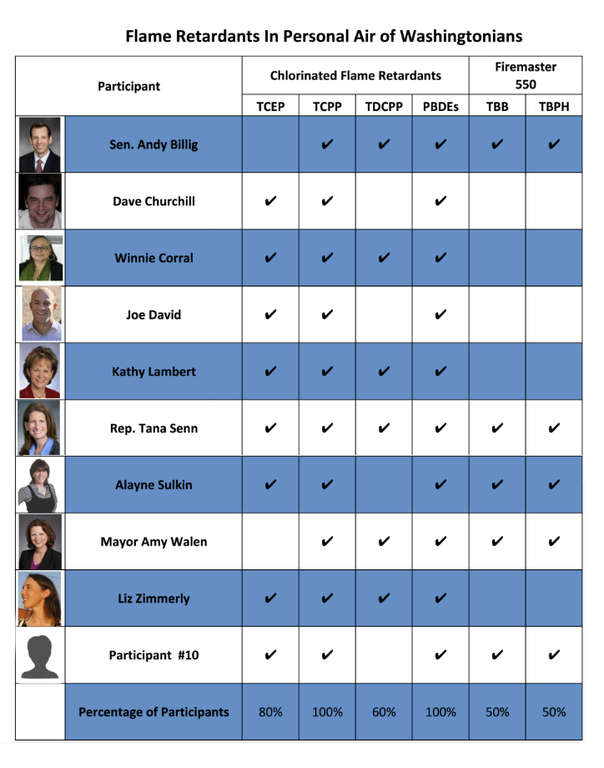The Results
Something’s In The Air
The Air We Breathe
We recruited 10 prominent Washington residents—elected officials, members of the media, a firefighter, a social services leader, and environmental experts—and asked them to take a personal air sample to measure the flame retardants in the air they breathe.
The results of this testing show us we can’t avoid exposure to dangerous flame retardants: we take them in through life’s most basic act, breathing.
The Testing Results
- Toxic flame retardants were in each of the ten participants’ air samples.
- Even though they are phased out, we are still breathing the neurotoxic PBDE flame retardants: they were in every air sample.
- Cancer-causing chlorinated Tris flame retardants were found in the highest concentration, and every participant’s sample indicated exposure to at least one.
- The PBDE replacement chemicals found in the Firemaster flame retardant (known as TBB and TBPH) were in half of the personal air samples.

NEXT: What Does It Mean To Be Breathing Toxic Flame Retardants?
Notes:
1. Chen, A.; Yolton, K.; Rauch, S.; Webster, G.; Hornung, R.; Sjödin, A.; Dietrich, K.; Lanphear, B., Prenatal polybrominated diphenyl ether exposures and neurodevelopment in U.S. children through 5 years of age: the HOME study. Environ Health Perspect 2014, 122, (8), 856-862.
2. Bradman, A.; Castorina, R.; Gaspar, F.; Nishioka, M.; Colón, M.; Weathers, W.; Egeghy, P.; Maddalena, R.; Williams, J.; Jenkins, P.; McKone, T., Flame retardant exposures in California early childhood education environments. Chemosphere 2014, 116, 61-66.
